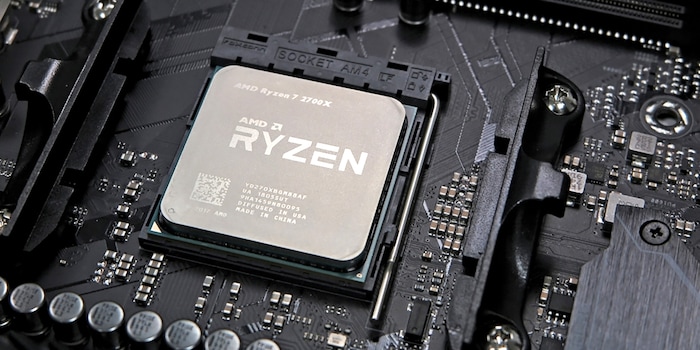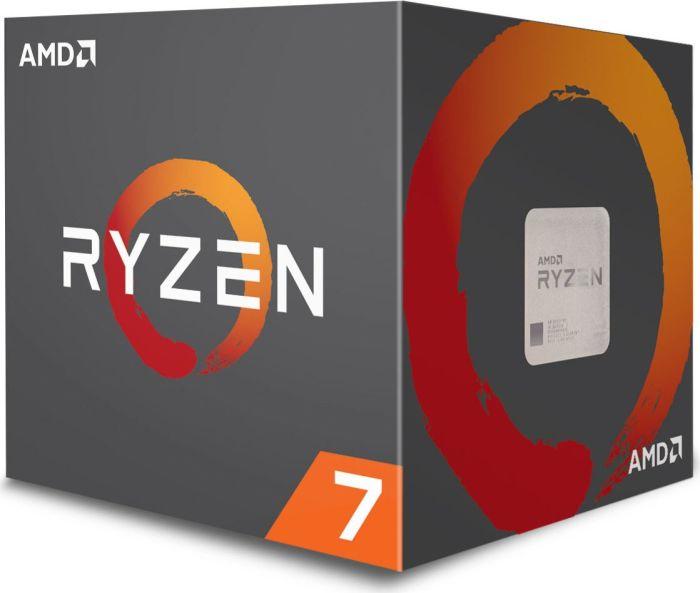

At a glance: AMD’s new Ryzen processors with Zen+ microarchitecture
About a year after the launch of the first Zen architecture processors, AMD surpassed itself once again with the Zen+ microarchitecture. The new processors are made using a 12-nanometre manufacturing technique and give their predecessors a run for their money.
Pinnacle Ridge is the name of the new core in the Ryzen 2000 processors. These offer up to eight cores and are intended for workstations and gaming PCs. The new top model is the Ryzen 7 2700X, which comes with eight cores as well as 16 threads, 3.7 GHz base clock (4.35 GHz boost) and overdrive. Unlike previous models, Zen+ processors are fitted with 12 nanometre technology rather than 14 nm. This lets AMD reach a higher clock speed of about 15 per cent while also reducing power consumption by around 10 per cent.
Four new processors with six and eight cores
These are the four new modules AMD are releasing with Zen+ architecture:
To put things into context, I’ve also included Intel’s top model, Core i7-8700K in the table
| Cores | Threads | Base clock | Boost | L3 | Max. TDP | |
|---|---|---|---|---|---|---|
| AMD Ryzen 7 2700X | 8 | 16 | 3.70 GHz | 4.35 GHz | 16 MB | 105 Watt |
| Intel Core i7-8700K | 6 | 12 | 3.70 GHz | 4.70 GHz | 12 MB | 95 Watt |
| AMD Ryzen 7 2700 | 8 | 16 | 3.20 GHz | 4.10 GHz | 16 MB | 65 Watt |
| AMD Ryzen 5 2600X | 6 | 12 | 3.60 GHz | 4.25 GHz | 16 MB | 95 Watt |
| AMD Ryzen 5 2600 | 6 | 12 | 3.40 GHz | 3.90 GHz | 16 MB | 65 Watt |
AMD vs Intel
If you do a lot of compiling or use software that can work on several processes at one time (multithreading), you’ll get more performance with the Ryzen 7 2700X than with Intel’s flagship processor core i7-8700K. With its eight activated cores and 16 threads, the Ryzen 7 2700X performs 29.3 per cent better on Cinebench R15 (where Intel scored 1,412 points and AMD, 1,826). But equally, Intel takes the lead in single threading – the 2700X trails 15.6 per cent behind Intel when it only uses one core (207 points for Intel; 179 points for AMD).
In terms of games, there’s not much to set apart Intel and AMD performance. If you play in resolutions as high as full HD, you’ll get slightly more FPS with Intel’s Core i7-8700K. However, games that can tear through more than 12 threads turn the tide in AMD’s favour, with the Ryzen 7 2700X coming out victorious. That being said, you need to look long and hard before you find a game like that. The folk at pcworld.com seem to have been able to find at least one example: «Deus Ex: Mankind Divided».
If we compare each processor’s maximum power consumption, you can see that AMD’s Ryzen 7 2700X, with its 105 watts, consumes 10 watts more than Intel’s Core i7-8700K at 95 watts.
Backward compatibility + turbo mechanisms
What AMD does really well is pre-existing backward compatibility. That’s what allows second generation Ryzen processors to work on older mainboards from the 300 series. However, it’s worth noting that to take advantage of the new turbo mechanisms – XFR 2 Enhanced (increased temperature-sensitive boost) and Precision Boost 2 (boost dependent on the motherboard and cooler) – you definitely need a new X470 board.
Don’t worry, though. Your processor will still run quickly enough even without these additional features – especially as XFR 2 Enhanced can only be used when there’s sufficient cooling. With the accompanying Wraith Prism cooler and a temperature around 90 degrees, the processor will deliver a four per cent increase in performance, according to AMD.
It’s another story with Precision Boost 2. This technology is only effective with light loads where only three or four threads are being used. Exactly how much performance we can expect from Precision Boost 2 is yet to be seen. AMD have indicated the second version of the technology in the Ryzen 7 2700X will deliver a power increase of almost 500 MHz compared with its predecessor. We’ll have more detailed information as soon as the new mainboards with their BIOS updates have made their way to the test lab.
Cost
In terms of price, there’s not much to set the AMD and Intel top models apart. That’s quite good, as it lets us focus our comparison on technical specs and our own personal taste:
That being said, AMD does have a slight advantage in price, given the Zen+ processors come with a cooler (Wraith Prism with RGB lighting). This wasn’t the case with the first Ryzen generation.
Verdict
Armed with its overhauled Ryzen processors, AMD is definitely closing the gap with Intel. If you intend to use your new processor for gaming, you’ll hardly notice a difference between these two top processors. Games are usually a tad faster on a Core i7. That’s assuming they support more than 12 threads.
However, if you’re looking for multithreading performance for onerous work as well as gaming potential, you’ll prefer the AMD specs. Meanwhile, the winner for overclocking fans is Intel, thanks to their processors’ reduced power consumption and lower operating temperatures.
With AMD proving real competition for Intel, it’ll be interesting to see if a price war breaks out. We’re also eager to see the release of the Ryzen 7 2800X. Will that be enough for AMD to push Intel off the throne and steal the industry crown?
Find out more about the new processors and their compatible mainboards here.
I find my muse in everything. When I don’t, I draw inspiration from daydreaming. After all, if you dream, you don’t sleep through life.


